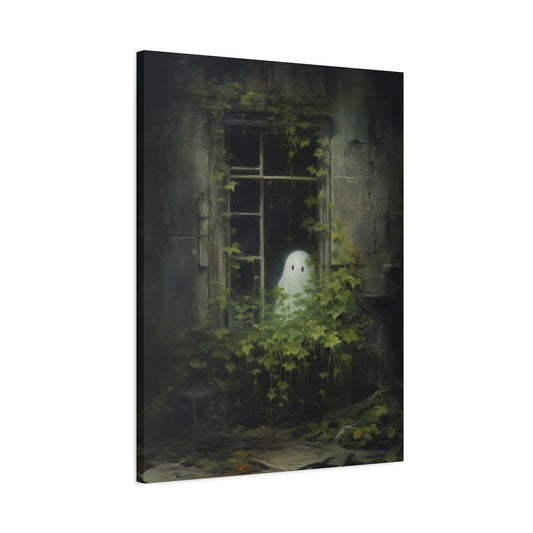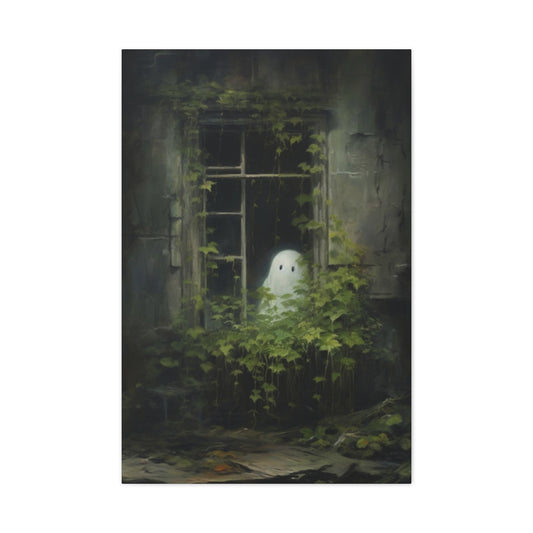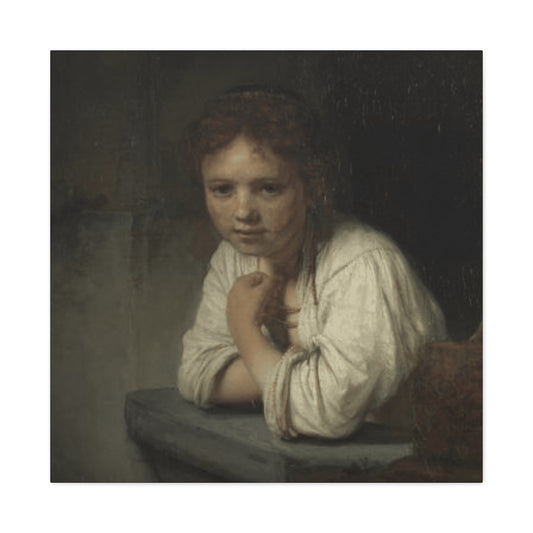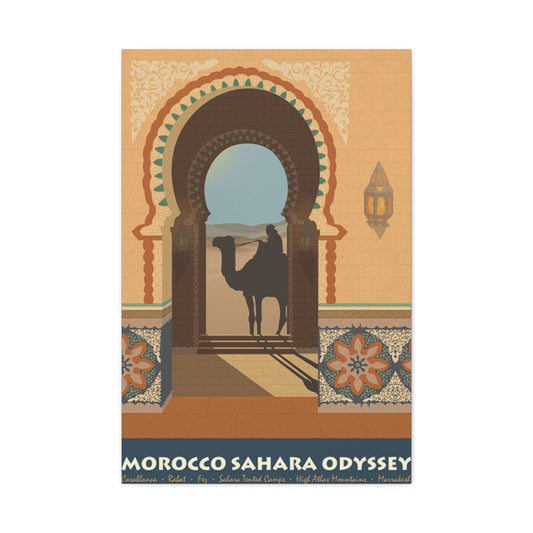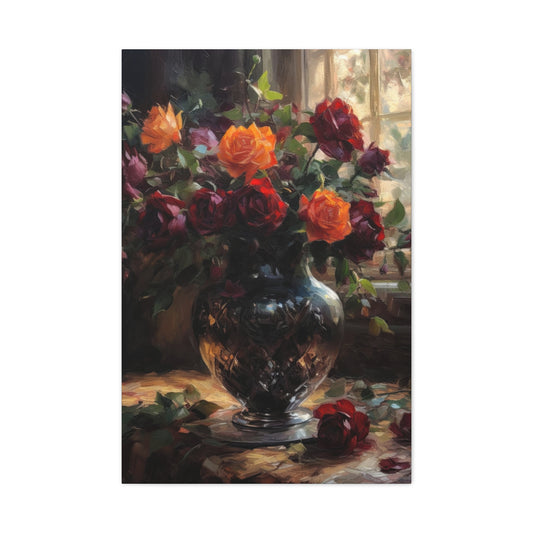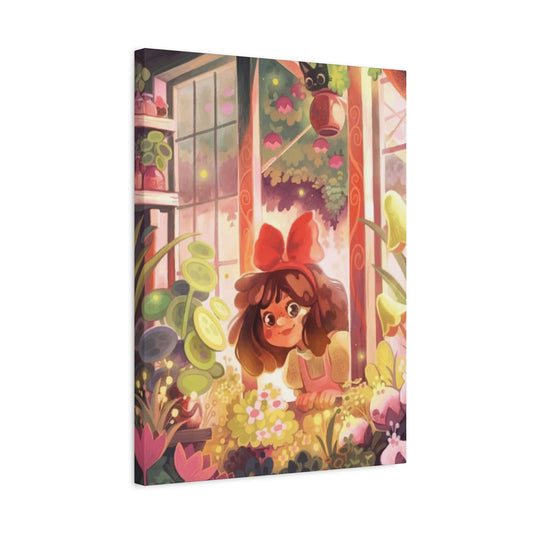The Rise of Custom Canvas Prints
In the ever-evolving world of interior design, canvas prints have emerged as one of the most popular ways to infuse a personal touch into home decor. Their versatility and ability to showcase a wide array of artwork—from cherished family photographs to breathtaking nature shots—make them a go-to choice for anyone looking to enhance their living space. Yet, as the desire for unique and personalized decor grows, so does the demand for more innovative ways to elevate these prints. This is where the magic of customization comes into play.
While traditional framing remains a staple, new techniques like mirror wrap and blur wrap have redefined how we perceive and experience canvas prints. These two methods not only enhance the overall aesthetic appeal of an image but also add a depth and dimensionality that goes beyond the standard print. Let’s explore these two groundbreaking techniques, both of which can elevate your canvas prints and bring them to life in ways you never thought possible.
Understanding Mirror Wrap: A Seamless, Three-Dimensional Effect
The mirror wrap technique is one of the most visually striking ways to transform a canvas print. This method involves extending the image’s edges onto the sides of the canvas, creating a smooth, reflective effect that makes the artwork appear as though it continues beyond its physical boundaries. The result is a seamless transition between the print and its surroundings, offering a more immersive, three-dimensional experience for the viewer.
The mirror wrap technique is especially powerful for images that feature vast landscapes, panoramic views, or bold geometric patterns. It enhances the visual depth of the artwork by reflecting parts of the image onto the sides of the canvas, making it feel as though the scene extends into the space around it. This dynamic effect not only draws the viewer in but also eliminates the need for traditional framing, which can often detract from the artwork’s true beauty.
What makes the mirror wrap particularly compelling is its ability to give a static image a sense of life and motion. When applied to nature photography, for instance, the effect creates an almost surreal sensation of stepping into the scene, offering the viewer a heightened experience of the landscape. This technique works equally well with architectural shots or abstract art, where the continuous flow of patterns or shapes can be amplified through the wrap.
The appeal of mirror wrap goes beyond its aesthetic appeal. For modern interiors, it offers a contemporary, clean look that complements minimalist decor. Without the interruption of framing, the artwork becomes the focal point of the room, effortlessly blending into the surrounding environment. Mirror wrap also allows for a greater sense of continuity in design—whether you're incorporating the print into a room with vibrant colors or choosing a more neutral palette, the technique works seamlessly with any setting.
The Soft Elegance of Blur Wrap: A Dreamlike Aesthetic
In contrast to the bold and reflective nature of mirror wrap, the blur wrap technique brings a gentler, more ethereal quality to canvas prints. This technique involves softly blurring the edges of the image as it wraps around the canvas, creating a smooth, seamless transition between the print’s core image and its surrounding space. Unlike the mirror wrap’s extension of the image, the blur wrap offers a more subtle approach, softening the visual boundaries and inviting the viewer to focus on the heart of the image.
Blur wrap is ideal for portraits, still-life compositions, and abstract art. It enhances the visual experience by creating a soothing, dreamlike atmosphere that evokes feelings of tranquility and serenity. The blurred edges allow the viewer to focus on the image itself without distraction, creating a peaceful and harmonious visual flow. Whether you’re displaying an intimate portrait, a delicate flower arrangement, or an abstract splash of colors, blur wrap adds an additional layer of refinement and sophistication to the piece.
One of the key benefits of the blur wrap technique is its ability to soften the transition between the image and its surroundings. This creates a subtle elegance, especially in rooms where you want the art to be a calming and peaceful presence. For those who appreciate minimalist design, blur wrap offers a refined simplicity that allows the art to blend beautifully into the space without overpowering it.
In terms of visual impact, blur wrap works exceptionally well with softer color palettes, allowing the image to seamlessly integrate with the hues of the room. It brings a level of understated luxury to the artwork, transforming a basic print into a captivating focal point that enhances the overall ambiance.
Comparing the Two Techniques: Mirror Wrap vs. Blur Wrap
While both mirror wrap and blur wrap offer unique ways to elevate your canvas prints, the decision of which technique to use ultimately depends on the type of image you’re working with and the mood you wish to evoke. Mirror wrap creates a bold, immersive effect that draws the viewer into the artwork. It works best with large, expansive images or those with sharp, defined lines, like landscapes and geometric patterns. The technique enhances the image's dimensionality, offering a more dynamic, interactive experience.
On the other hand, blur wrap provides a more serene and understated elegance, making it perfect for portraits, soft still-life photography, or abstract pieces. Its subtle blending and soft edges lend a sense of calm and fluidity, creating a dreamlike atmosphere that doesn’t overpower the space. Blur wrap is particularly effective in rooms where the art should enhance the ambiance without dominating the visual field.
|
Related Catagories: |
Both techniques offer something unique, and the choice between them largely depends on the overall aesthetic you want to achieve. Whether you're seeking the sharp, reflective brilliance of mirror wrap or the soft, elegant transition of blur wrap, these methods can dramatically transform your canvas prints into captivating works of art that become the centerpiece of your space.
The Benefits of Choosing Customization with Mirror and Blur Wrap
One of the most appealing aspects of mirror and blur wrap techniques is their ability to personalize your artwork. By opting for these customization options, you are not just printing a photograph or painting; you are creating a piece that speaks to your individual style and enhances your space in a truly meaningful way. Here are some key benefits of choosing mirror and blur wrap for your canvas prints:
-
Enhanced Aesthetic Appeal: Both mirror and blur wrap techniques add a new layer of sophistication to your artwork. They create a more polished, professional look that elevates the overall aesthetic of the print.
-
Unique Visual Experience: These methods transform a standard print into something truly extraordinary. Whether you opt for the reflective effect of mirror wrap or the soft elegance of blur wrap, each technique offers a unique visual experience that captures attention and draws the viewer in.
-
Customization for Any Space: Mirror wrap and blur wrap can be tailored to suit any room's decor. Whether you're looking to create a bold focal point or a subtle, serene atmosphere, these techniques can adapt to your design vision and blend seamlessly with your surroundings.
-
Modern and Contemporary Look: Both techniques are highly suited for contemporary interiors, offering a sleek and clean look that complements modern design sensibilities. Without the need for traditional framing, these prints provide a more minimalist, streamlined appearance that is highly sought after in today’s decor trends.
-
Timelessness: Unlike trends that come and go, both mirror and blur wrap techniques offer timeless appeal. These techniques are designed to last, ensuring that your artwork remains captivating and relevant for years to come.
Personalizing Your Space with Artistic Elegance
Mirror and blur wrap techniques have opened up new realms of possibility when it comes to customizing canvas prints. These methods offer a fresh and innovative approach to displaying artwork, making your prints more dynamic, immersive, and personalized. Whether you’re drawn to the bold, three-dimensional allure of mirror wrap or the soft, dreamlike elegance of blur wrap, these techniques allow you to transform your canvas prints into truly remarkable pieces of art.
By adding a personalized touch through these customization options, you can create art that speaks to your unique style while enhancing the beauty of your space. Whether you are looking to make a statement or evoke a sense of tranquility, mirror and blur wrap are powerful tools for elevating your artwork and turning your walls into a true reflection of your personality.
As you continue your journey into the world of custom canvas prints, the opportunities for creativity are endless. Whether you’re adorning your living room, office, or bedroom with wallpics, or exploring other ways to display your favorite photos, these customization techniques offer a fresh, captivating approach to home decor. In the following parts of this series, we will dive deeper into how to choose the right technique for specific types of images and how these wraps can complement different design styles, ensuring that your art remains an enduring masterpiece.
Choosing the Right Wrap Technique for Your Canvas Print: How Mirror and Blur Wrap Complement Different Styles and Designs
Personalizing Your Art with the Right Technique
As we continue to explore the captivating world of canvas print customization, it's essential to consider how mirror and blur wrap techniques can enhance different styles of artwork. The right wrap can bring out the best in your image, creating a visual experience that resonates with the overall design and atmosphere of the space. Whether you are decorating your home, office, or gallery, the technique you choose for your canvas print can have a profound impact on how the art interacts with the environment.
In this part of the series, we will delve into how mirror and blur wrap techniques complement specific types of images and styles of décor. By understanding which technique works best with certain designs, you can ensure that your customized canvas print not only fits your personal taste but also elevates the overall aesthetic of your space. Let’s examine the ideal scenarios for each wrap style and how you can make the most of these techniques.
The Bold and Dynamic: Mirror Wrap for Landscapes and Geometric Art
One of the most striking applications of the mirror wrap technique is in large, panoramic landscapes. Whether it’s a sweeping vista of mountains, a sun-drenched beach, or a forest path, the mirror wrap’s ability to extend the edges of the image onto the canvas sides creates a powerful visual experience. When applied to such expansive subjects, the mirror wrap gives the illusion that the scene is endless, making the viewer feel as though they are stepping into the picture itself.
This immersive quality works particularly well in spaces where the artwork is meant to be a statement piece—living rooms, entryways, or even offices. The mirror wrap brings a sense of continuity and depth, allowing the image to flow seamlessly with the surrounding environment. The technique eliminates the need for framing, which can sometimes break the flow of the design, giving your space a modern, clean look that perfectly complements contemporary or minimalist décor.
For those who favor geometric or abstract art, the mirror wrap technique can also add visual intrigue. Bold patterns, sharp lines, and symmetrical designs become more dynamic when their edges are reflected around the sides of the canvas. The continuous flow of shapes creates a mesmerizing effect, drawing attention to the intricate details of the artwork. This makes the mirror wrap ideal for spaces with a modern or industrial design, where geometric patterns and abstract art are often featured prominently.
Soft and Serene: Blur Wrap for Portraits and Still Life Photography
In contrast to the boldness of mirror wrap, the blur wrap technique works wonders with more delicate and subtle images. Portraits, still life compositions, and soft-focused photographs are often enhanced by the gentle fading of edges that blur wrap offers. By softening the transition between the image and the surrounding canvas, blur wrap creates a dreamy, tranquil atmosphere that is perfect for spaces meant to evoke calm and serenity.
For portraits, blur wrap brings out the subject’s features without distraction, allowing the image to feel more intimate and personal. The edges of the face or figure gently fade into the sides of the canvas, creating a seamless flow between the artwork and the environment. This effect is particularly effective in bedrooms, living rooms, or spaces where you want to create a peaceful, reflective atmosphere. The subdued elegance of blur wrap makes it a perfect choice for portraits that focus on human emotion, bringing the subject to life in a soft and gentle manner.
Similarly, blur wrap works beautifully with still life photography. The technique can enhance the subtle textures and intricate details of flowers, fruits, or other objects, while the fading edges create a sense of harmony that adds depth without overwhelming the viewer. For still life compositions, blur wrap invites the viewer to appreciate the beauty of the subject in a quiet, contemplative way. This technique is well-suited for traditional or vintage-style interiors, where the focus is often on the natural beauty of the subject and the artistry of the composition.
Abstract art also benefits from blur wrap, especially when the piece contains flowing lines or soft color transitions. The blurred edges allow for a fluid, organic feel that enhances the abstract design, encouraging the viewer to immerse themselves in the overall mood of the artwork rather than focusing on any one specific element. Whether the colors are muted or vibrant, blur wrap adds a layer of sophistication to the piece, making it perfect for spaces that prioritize elegance and tranquility.
How Mirror and Blur Wrap Enhance Your Home Décor
Beyond the specific types of artwork, it’s crucial to understand how mirror and blur wrap techniques can complement different home décor styles. The choice of technique should align with the overall design philosophy of the space, ensuring that the artwork not only fits seamlessly into the room but enhances the atmosphere.
For modern and minimalist interiors, mirror wrap is the ideal choice. Its clean, reflective nature complements contemporary furnishings and open, airy spaces. The absence of a traditional frame gives the artwork a polished, streamlined appearance that contributes to a clutter-free aesthetic. Whether you have sleek, angular furniture or simple, neutral tones, the mirror wrap technique helps the artwork blend into the space while still standing out as a focal point.
For traditional or vintage-style interiors, blur wrap is a more fitting choice. The technique's soft transitions and ethereal qualities add a sense of timelessness to the artwork, making it feel more like a cherished heirloom than a modern print. In spaces with classic wood furniture, ornate details, and warm color palettes, blur wrap enhances the nostalgic feel of the room without overwhelming it. It creates a subtle connection between the art and the surrounding décor, allowing the artwork to be a cohesive part of the design.
In eclectic spaces, where various design elements come together in an unpredictable and creative way, mirror and blur wrap can be used to bring balance and cohesion. Mirror wrap adds a modern, sleek element that contrasts beautifully with more traditional or vintage pieces, while blur wrap can soften harsh lines or bold patterns, allowing the artwork to flow more naturally within the diverse mix of styles.
Making the Right Choice: How to Decide Which Wrap Technique Fits Your Artwork
Now that we’ve explored the unique qualities of mirror and blur wrap, it’s important to understand how to make the best decision for your specific artwork. When choosing between the two, consider the following factors:
-
Type of Image: Mirror wrap works best with expansive landscapes, geometric designs, and images with a lot of depth and structure. Blur wrap, on the other hand, is ideal for softer, more intimate subjects like portraits, still life, and abstract designs with fluid lines and gentle transitions.
-
Mood and Atmosphere: Mirror wrap creates a bold, immersive effect that can add drama and excitement to a space. Blur wrap, in contrast, evokes calmness and tranquility, making it perfect for creating a soothing environment.
-
Room Décor: Consider how the wrap will complement the rest of your space. Mirror wrap is perfect for modern, minimalist interiors, while blur wrap suits traditional, vintage, or eclectic rooms. Both techniques can be adapted to fit the mood and personality of the room.
-
Desired Impact: Mirror wrap creates a visual spectacle that draws attention, while blur wrap enhances the overall harmony of a space without overshadowing other design elements. Choose the technique that aligns with the statement you want to make.
Personalizing Your Canvas Prints with the Right Technique
Choosing the right wrap technique for your canvas print is a key step in creating a personalized, visually captivating piece of art that enhances your space. Whether you opt for the bold, immersive qualities of mirror wrap or the serene elegance of blur wrap, each technique offers something unique that can transform your artwork into a true masterpiece. By understanding how each technique complements different styles of images and décor, you can make an informed decision that brings your vision to life.
As you continue to explore the possibilities of canvas print customization, remember that the technique you choose should reflect your personal style and enhance the overall atmosphere of your space. In the next part of this series, we will explore the impact of lighting and placement on the effectiveness of mirror and blur wrap techniques, offering tips on how to make the most of these customization options.
Enhancing Visual Appeal with Strategic Placement and Lighting: Maximizing the Impact of Mirror and Blur Wrap Techniques
Setting the Stage for Your Artwork
As we continue our journey through the world of artistic customization, we now explore two critical elements that can dramatically elevate the impact of your personalized artwork: strategic placement and lighting. While mirror and blur wraps offer visually stunning effects that transform the image itself, the way your art is positioned within a space and the type of lighting it receives can further amplify its effect, ensuring it captures attention and creates the desired ambiance.
In this segment, we will delve into how these two essential factors work in tandem with the distinctive qualities of the mirror and blur wrap techniques. By understanding how to place your masterpiece and illuminate it properly, you can maximize its aesthetic potential, turning it into a true focal point of your room.
Placement: Creating a Harmonious Flow in Your Space
The placement of your artwork plays a pivotal role in how it is perceived and how it interacts with its environment. Whether you are aiming for a bold statement or a subtle touch of elegance, the position of your artwork within the room can significantly affect the overall visual harmony of the space. Mirror and blur wrap techniques, in particular, respond beautifully to careful placement, as they each bring their own unique qualities that can either complement or contrast the surrounding décor.
For Mirror Wrap: Amplifying Depth and Continuity
With its reflective qualities, the mirror wrap creates an immersive experience by extending the edges of the image around the canvas. This technique thrives in spaces where the artwork can serve as a dominant feature—large walls in living rooms, foyers, or dining areas are ideal for showcasing this technique. The expansive nature of the image, coupled with the continuous flow of the mirrored edges, creates a sense of depth and continuity. Placing a mirror-wrapped piece on a central wall draws attention and invites the viewer to explore the artwork’s boundaries, making the space feel larger and more dynamic.
When positioning your image, consider placing it at eye level to enhance the full impact of the wrap. Whether it’s a sweeping landscape or a geometric pattern, placing the artwork in a place where it commands attention allows the reflective edges to work their magic, creating the illusion that the image is not confined to the canvas, but rather stretches out into the space itself. If the piece is larger, consider balancing it with minimalist furnishings or open spaces to let the image breathe and maintain its visual clarity.
For Blur Wrap: Creating Tranquil Elegance in Your Space
On the other hand, blur wrap creates a soft, ethereal effect that flows seamlessly with the surrounding environment. To maximize this dreamy quality, place your blurred art in spaces that promote calmness and relaxation—bedrooms, reading nooks, or meditation rooms are perfect settings for this type of artwork. The technique’s gentle fading of the edges into the canvas allows the piece to become part of the room, rather than an isolated object, enhancing the overall harmony of the space.
Placing a blur-wrapped piece on a quiet wall with soft tones allows its serenity to stand out. It’s important to consider the surrounding décor—soft textiles, natural materials, and neutral color schemes will allow the blur effect to shine. For portraits or still-life images, this placement approach gives the artwork an intimate feel, making it a personal focal point that brings warmth and tranquility to the room.
Balancing the Space with Art and Functionality
Whether you choose mirror or blur wrap, it’s essential to remember that art should always complement the room’s function and overall vibe. For example, in a high-traffic area like a hallway or entryway, a piece with mirror wrap can make a dramatic statement without overwhelming the space, while in a quiet retreat like a home office or library, blur wrap can create a soft, welcoming atmosphere that encourages relaxation and reflection. The right placement ensures that your artwork not only enhances the room’s design but also resonates with the emotions and energy you wish to cultivate.
Lighting: Bringing Your Artwork to Life
Proper lighting is one of the most important, yet often overlooked, elements in maximizing the impact of your artwork. The way your art is illuminated can dramatically change its appearance, emphasizing certain features while adding a layer of depth and texture. For both mirror and blur wrap techniques, the right lighting can amplify their visual effects, turning your art into a dynamic piece that draws the eye and creates an immersive experience.
For Mirror Wrap: Highlighting the Reflection and Depth
The reflective nature of the mirror wrap technique thrives under proper lighting. The key here is to create a balance between light and shadow, allowing the mirrored edges to catch the light and reveal their depth. Ideally, position your artwork near a light source, such as overhead lighting or wall-mounted fixtures, that illuminates the piece evenly without causing glare or harsh shadows. This allows the reflective effect to shine, creating an almost three-dimensional presence in the room.
|
Related Catagories: |
Consider using adjustable lighting fixtures, like track lights or directional lamps, to focus light directly on the piece. This helps bring attention to the edges of the image and enhances the sense of continuity, as if the image is continuing beyond the canvas itself. The light can also interact with the surrounding décor, reflecting off surfaces and creating an ever-changing visual experience throughout the day. This technique works particularly well with large pieces, where the light can draw attention to the artwork’s expansive quality, enhancing the immersive effect.
For Blur Wrap: Soft, Ambient Lighting for Dreamlike Elegance
When it comes to blur wrap, the goal is to enhance the soft, tranquil effect of the piece without overpowering its subtlety. Soft, ambient lighting works best for this technique, as it creates an even, diffused glow that complements the smooth transitions of the blurred edges. Rather than using harsh spotlights, opt for wall sconces, table lamps, or natural light that gently illuminates the artwork, allowing the faded edges to merge seamlessly into the surroundings.
In spaces where the blur-wrapped artwork is placed, consider using lighting that enhances the serene, calming atmosphere. Natural daylight can be especially effective in this regard, as it brings out the gentle nuances of the image, highlighting its dreamlike quality. For evening settings, soft LED lights or dimmable sconces can create a peaceful ambiance that enhances the soothing nature of the blurred effect, inviting relaxation and contemplation.
Conclusion: Creating a Visually Captivating Environment
By thoughtfully considering the placement and lighting of your artwork, you can elevate the impact of both mirror and blur wrap techniques, transforming your space into an immersive environment where art and design complement one another seamlessly. Strategic placement allows the unique qualities of each wrap to shine, while proper lighting can bring out the depth, texture, and visual intrigue of your personalized masterpiece.
As you explore the potential of mirror and blur wraps in your home or office, keep in mind the balance between form and function. By blending these artistic techniques with thoughtful design choices, you can create a space that is not only visually captivating but also deeply personal and reflective of your unique style. In the final part of this series, we will explore how the choice of materials and finishes can further enhance the overall aesthetic of your art, providing you with even more ways to personalize your creative expression.
Perfecting Your Art Display: The Role of Materials and Finishes in Mirror and Blur Wrap Customization
A Deep Dive into Material Choices
The final touch in transforming your artwork lies in the materials and finishes you choose. While mirror and blur wrap techniques create striking visual effects, the texture, surface quality, and framing options you select further enhance the depth, richness, and overall appeal of your piece. By understanding how different materials interact with these artistic techniques, you can ensure that your artwork not only stands out visually but also stands the test of time.
In this concluding segment, we will explore the role of materials and finishes in completing your custom artwork, highlighting how each decision—whether related to the canvas, coating, or frame—can contribute to the overall aesthetic and functionality of your piece.
Materials: Choosing the Right Surface for Your Artwork
The choice of material on which to print your image plays a significant role in the way your mirror or blur wrap techniques will appear and feel. The surface you select influences everything from the texture of the final piece to its durability and longevity. Whether you're opting for a smooth, refined finish or a more textured surface, your choice of material should complement both the technique and the style of your artwork.
For Mirror Wrap: Sturdy Yet Elegant Materials
When it comes to mirror wrap, the material you choose should be strong enough to support the image’s expansion over the sides of the canvas without compromising its integrity. A premium-quality, heavy-duty canvas is often the ideal choice for mirror-wrapped artwork. The thickness of the canvas ensures that the image maintains its clarity as it wraps around the edges, while also preventing warping or sagging over time.
In addition to the traditional canvas material, some artists choose alternative options like matte or satin photo paper, which can also achieve a reflective, sleek finish. These materials allow the mirrored edges to have a sharp, clear effect, making the artwork appear almost as though it's been digitally extended beyond the canvas. By choosing a sturdy material, you ensure that your image maintains its vibrant quality and doesn’t lose its definition as the wrap transitions across the sides.
For Blur Wrap: Textured Elegance and Softness
On the other hand, blur wrap benefits from materials that offer a smooth yet slightly textured surface. Textured canvas or cotton-based materials are ideal for this effect, as they allow for soft blending while enhancing the dreamlike quality of the blurred edges. The texture can lend an organic, handcrafted feel to the artwork, further adding to its serene, ethereal quality. A matte canvas or a natural linen finish works particularly well, as it absorbs light in a way that enhances the softness of the blur wrap’s gentle fading.
For those who prefer a glossy finish, satin photo paper is another option that retains the muted elegance of the blur technique while adding a modern sheen to the artwork. This type of material reflects light softly, creating a smooth visual flow that supports the subtle transitions between the central image and its blurred edges. Regardless of your material choice, it’s crucial to ensure that the surface texture enhances, rather than detracts from, the ethereal, tranquil quality of the blur wrap.
Finishes: Protecting Your Artwork with Style
Once you’ve selected the ideal material, the next step is choosing the right finish to protect and enhance your artwork. Finishes not only safeguard your piece from environmental damage but also impact the overall texture and feel of the final product. Depending on your artistic goals, there are several finishing options to consider.
For Mirror Wrap: A Clean and Modern Finish
A gloss or satin finish is commonly used with mirror-wrapped pieces, as these finishes enhance the sleek, contemporary look of the artwork. Gloss finishes bring out the vibrant colors in your image, creating a striking contrast between the reflective edges and the central piece. This glossy effect also adds a polished, high-end look, ideal for modern interiors that demand a bold statement.
Alternatively, a satin finish offers a softer, more subtle shine, providing a refined, elegant aesthetic while still allowing the reflective edges to remain distinct and engaging. Both finishes work well with mirror wrap, but the gloss finish is especially suited for images that rely on vibrant colors and high contrast, such as abstract art or dramatic landscapes.
For Blur Wrap: Enhancing Softness and Depth
In contrast, blur wrap artwork benefits from a matte or satin finish. A matte finish preserves the soft, dreamlike effect of the blurred edges by diffusing light and preventing harsh reflections. This type of finish is particularly beneficial for portraits, still-life pieces, and abstract compositions, as it maintains the calm, serene atmosphere of the piece without distraction. Matte finishes can also help minimize glare, ensuring that the piece retains its delicate quality in various lighting conditions.
Satin finishes, while slightly glossier than matte, still offer a subtle sheen that enhances the depth and texture of the blur wrap without overpowering the soft transitions. This finish works particularly well for more vibrant or colorful blur-wrapped images, as it allows the light to catch the artwork’s surface without disturbing the overall fluidity of the piece.
Framing: To Frame or Not to Frame?
One of the last decisions you'll make is whether or not to frame your artwork. Mirror and blur wraps each offer a unique visual experience that may or may not benefit from a traditional frame.
For Mirror Wrap: Framing to Enhance the Aesthetic
While mirror wrap often stands out beautifully on its own, some may opt to add a frame to further enhance its contemporary feel. A minimalist, thin frame can complement the clean edges of the artwork without detracting from the overall effect. Black, white, or metallic frames are excellent choices, as they provide a neutral contrast that allows the reflective edges to be the focal point.
For larger pieces, a floating frame—where the artwork appears to "float" within the frame—can add an extra layer of depth and sophistication. This type of framing creates a dramatic effect, allowing the image to seem as though it’s hovering above the surrounding space, enhancing the three-dimensionality created by the mirror wrap technique.
For Blur Wrap: Simplicity for Elegance
In contrast, blur-wrapped pieces typically do not require traditional framing, as the edges of the artwork seamlessly fade into the sides of the canvas. The soft transitions make a frame unnecessary, and often, it’s best to let the artwork flow naturally into the room. However, for those who prefer framing, a thin, understated frame can complement the piece’s ethereal quality without disrupting the subtle beauty of the blurred edges. Consider a frame that matches the color tones of the artwork, such as natural wood or muted metallics, to maintain a cohesive, tranquil aesthetic.
Making Your Art Truly One-of-a-Kind
As we conclude this series, it's clear that the materials, finishes, and framing decisions you make can significantly influence the overall appearance and feel of your artwork. Whether you are drawn to the dynamic, reflective quality of the mirror wrap or the soft, dreamlike effect of the blur wrap, the right choices will enhance the final piece, allowing it to truly resonate within your space.
By carefully selecting the ideal material and finish, and considering whether or not to frame your artwork, you can create a personalized masterpiece that not only complements your interior design but also stands as a unique expression of your style and creativity. The mirror and blur wrap techniques, when combined with the perfect materials and finishes, offer endless possibilities for transforming your walls into a gallery of one-of-a-kind, timeless art.
Conclusion:
In this comprehensive exploration of mirror and blur wrap techniques, we have delved into the transformative power these methods bring to your artwork. By offering a dynamic way to showcase your photographs and designs, these techniques go beyond traditional prints to create stunning, three-dimensional visual experiences. Whether through the reflective allure of the mirror wrap or the soft, ethereal beauty of the blur wrap, each approach offers a unique way to engage with art, allowing it to transcend the confines of a simple canvas and become a captivating focal point in any space.
From selecting the perfect material to considering finishes and framing options, we’ve seen how each decision plays a crucial role in enhancing the overall aesthetic of the piece. The mirror wrap technique, with its seamless, immersive effect, offers a modern, sleek aesthetic ideal for vibrant landscapes and geometric patterns. Meanwhile, the blur wrap technique introduces a calming, dreamlike elegance that transforms portraits and abstract art into serene masterpieces.
Ultimately, the combination of these artistic techniques with thoughtful material and finish choices ensures that your artwork isn’t just a decoration but a truly personalized expression of your style. Mirror and blur wraps are not just methods of customization; they are tools that allow you to elevate your space, imbue your environment with personality, and transform any image into a timeless work of art.
By embracing these techniques, you give your art a distinctive voice—whether you choose to showcase the reflective brilliance of mirror wrap or the gentle serenity of blur wrap, these options enable you to curate a space that is uniquely yours. With the right materials, finishes, and framing decisions, your artwork can transcend ordinary decoration and become an unforgettable visual experience, one that continuously inspires and captivates all who encounter it.











